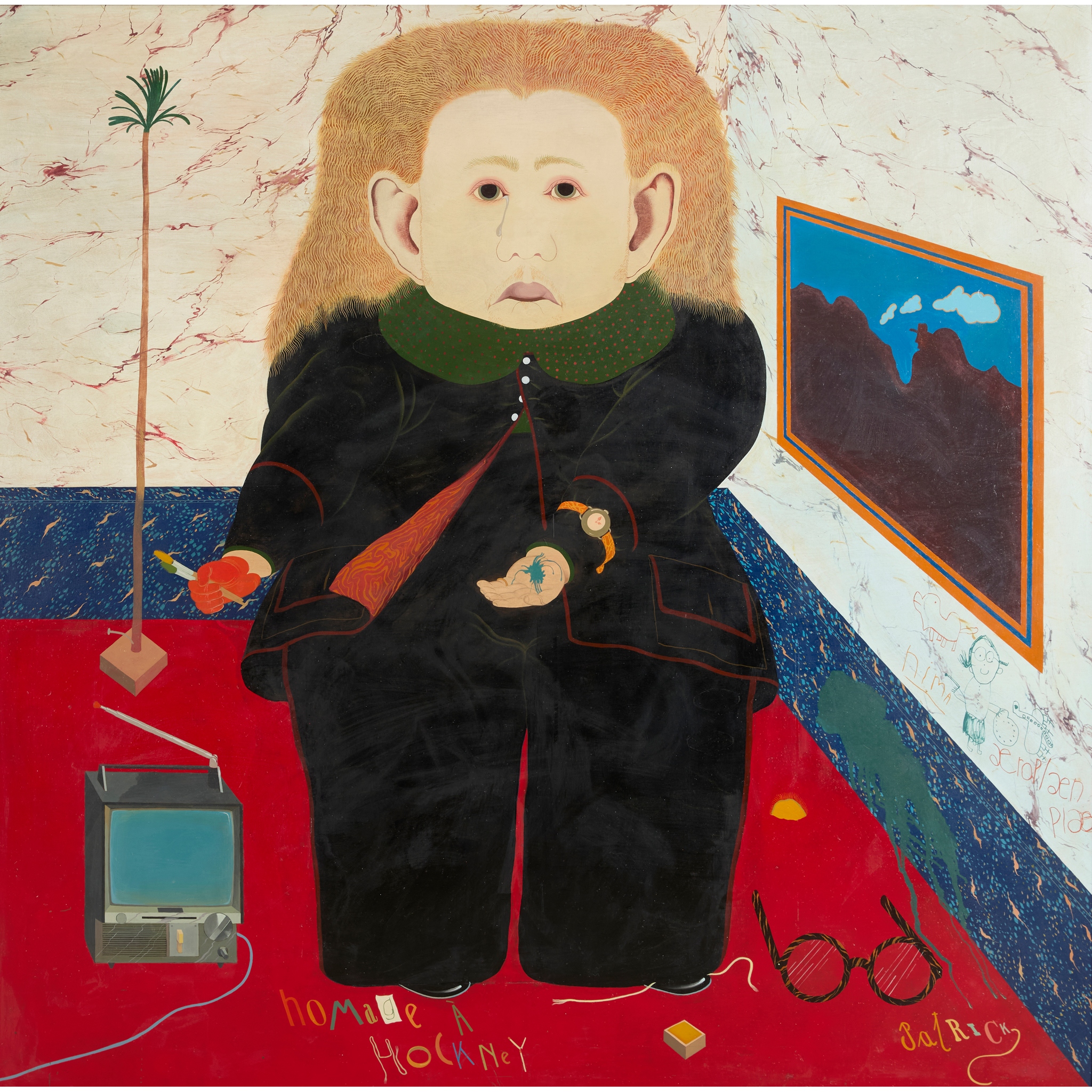JOHN BYRNE R.S.A. (SCOTTISH 1940-2023) §
HOMAGE A HOCKNEY - 1970
£18,900
Auction: 02 April 2025 from 10:00 BST
Description
Signed ‘Patrick’ lower right, inscribed with title, bears inscription by Byrne verso (see footnote for transcription), oil on board
Dimensions
121cm x 121cm (47.5in x 47.5in)
Provenance
From The Collection of Father Tom Jamieson, Renfrew. Purchased directly from the artist and thence by descent to the present owners.
Footnote
The work is accompanied by the following inscription by Byrne on the reverse:
“HOMAGE A HOCKNEY by John Byrne /Patrick. On the Occasion of David Hockney’s Major Retrospective Show at the Whitechapel Gallery, London covering the period 1961-70 with 46 paintings, 45 drawings and 47 prints.
In this painting some Hockney paraphernalia is included (the T.V. set, the Palm Tree, the Spectacles and a paraphrase of Tired Indians, Rocky Mountains, 1965, and the graffiti) in a bid to chronicle the painting scene (Hockney’s) over the past ten years. The Ty-Phoo tea pack, the swimming pools, the latter realist (totally representative) paintings have all been referred to by implication in this simple turning out of Hockney’s cerebral drawers. John Byrne, April 1970.”
This work is depicted in Byrne's famous early ‘faux-naive’ style. “My father doesn’t know I’m sending this to you as he paints for his own enjoyment and does not exhibit his work…”, began the letter Byrne sent to London’s Portal Gallery in 1967. So commenced the infamous ruse in which he got his foot in the door of the London art world by pretending to be a "primitive" self-taught artist named Patrick, a 71-year-old retired labourer from Govan. Though he confessed the truth to the directors before it could spin too far out of hand, the gallery continued to collude with Byrne to present him to their buying audience as a fashionable so-called “Primitive Painter”… until he was ultimately outed in The Observer as an alumni (of above average sophistication) by the Glasgow School of Art itself. He had several successful exhibitions with Portal between 1968 and 1971.
In his artist's monograph ‘John Byrne: Art & Life’, published by Lund Humphries in 2011, author Robert Hewison further traces the roots of this aesthetic beyond the primitive, and places it within a Pop Art context: “His somewhat swollen, doll-like children, including boys in sailor suits, clowns and angels occupy a fantastical world that implies nostalgia for a Victorian childhood – although the cats and monkeys that inhabit this Rousseauvian landscape have a sharp-toothed menace. But the Victoriana is as contemporary as the Beatles’ Sgt. Pepper, part of the repertoire of British Pop Art established by Peter Blake’s fairground wrestlers or Joe Tilson’s wooden constructions.”

